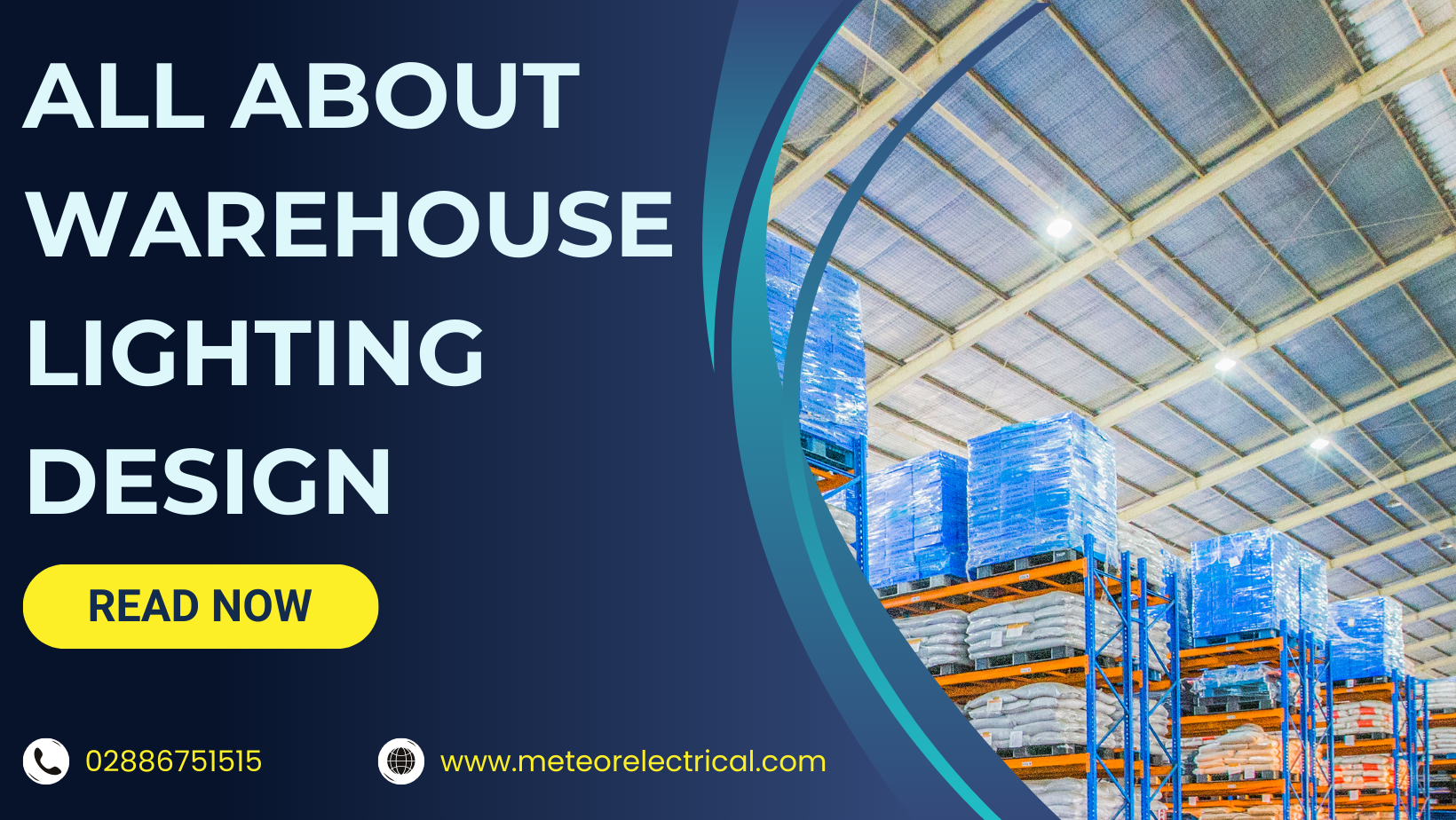Warehouse Lighting
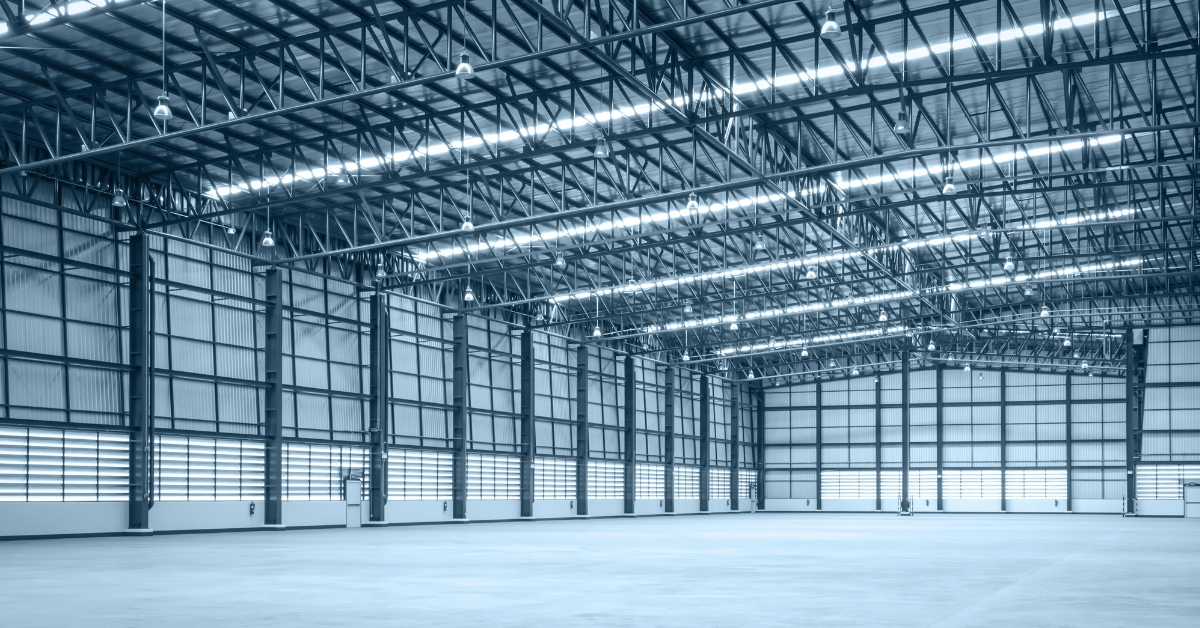
Lighting in warehouses accounts for approximately 25% of energy usage in industrial facilities, with poorly designed systems leading to significant energy waste and increased operational costs (Energy.gov). However, the benefits of effective warehouse lighting go beyond just reducing energy consumption. According to a study by the World Economic Forum, well-lit work environments can boost productivity by up to 20% and reduce accident rates by nearly 60% (Cornell University Ergonomics).
Proper lighting is essential in a setting where heavy machinery, high shelves, and narrow aisles are the norm. It is also essential for operational efficiency and the safety and well-being of employees. This blog will guide you through the essentials of warehouse lighting, from understanding the different lighting solutions to optimising your setup for maximum efficiency and safety.
What Is Warehouse Lighting and Why Does It Matter?

Warehouse lighting is specifically designed to meet the demands of industrial environments. It’s not just about placing a few bright bulbs here and there—it’s about strategically implementing fixtures that enhance visibility, reduce errors, and promote safe working conditions. A well-lit warehouse ensures smooth operations, minimises risks, and contributes to the bottom line.
While standard lighting might work in a regular office or retail space, warehouses have unique requirements. They often feature high ceilings, narrow aisles, and operate under challenging conditions. This is where specialised lighting, particularly LED solutions, comes into play. They offer bright, focused illumination with minimal energy consumption.
Credit: Led Light Expert
The Importance of Proper Warehouse Lighting
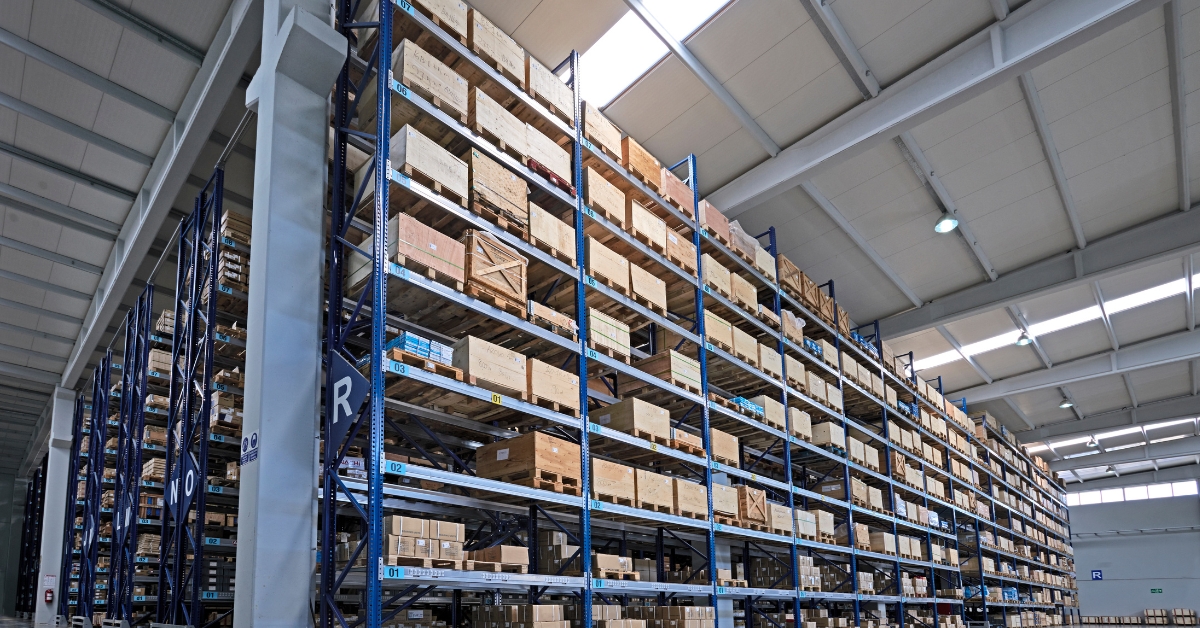
If you want to ensure efficient and safe warehouse operations, investing in the right lighting is key. Here’s why:
1. Enhanced Visibility for Safer Operations
Warehouses often have high shelves and intricate layouts. Good lighting helps workers navigate these spaces more easily, reducing the likelihood of accidents. Choosing lighting with a narrow beam angle can concentrate light where needed most, whether along aisles, workstations, or loading docks.
2. Reduced Errors and Improved Productivity
Dim lighting can lead to mistakes, whether misreading labels or mishandling products. Bright, even lighting helps workers stay focused and reduces eye strain, leading to fewer errors and better overall productivity.
3. Energy Efficiency and Cost Savings
With energy costs being a significant expense in large facilities, choosing energy-efficient lighting is crucial. LED warehouse lights, for instance, consume significantly less energy than traditional options like metal halide or fluorescent lamps. Over time, the savings from reduced energy usage and lower maintenance costs can be substantial.
4. Minimising Employee Fatigue
Lighting doesn’t just affect visibility; it also impacts mood and alertness. Properly lit environments can help maintain employee focus and energy levels throughout the day, particularly in spaces with limited natural light.
5. Preventing Work-Related Accidents
Warehouses are often home to heavy machinery, and poor lighting can increase the risk of accidents. Effective lighting ensures that operators can see their surroundings, reducing the chance of collisions or mishaps.
Exploring Different Types of Warehouse Lighting
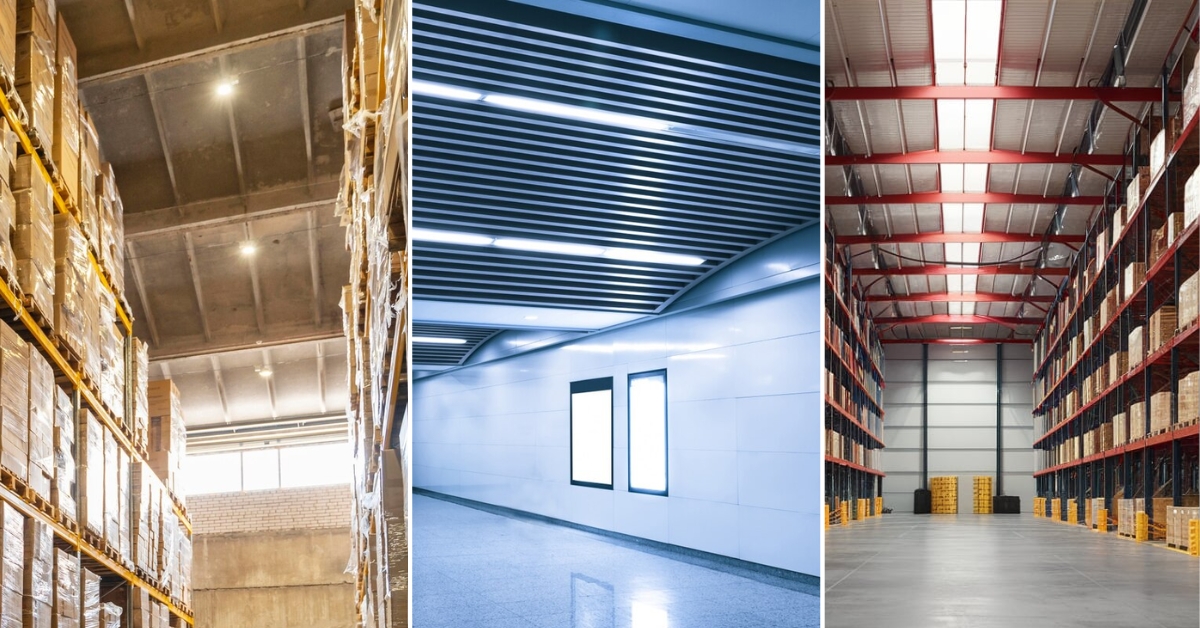
When choosing the right lighting for your warehouse, it’s important to consider the options available. The most common types include:
1. Metal Halide Lamps
These lamps have been a staple in industrial lighting for decades. They produce a bright, white light by using a mixture of gases and electricity. However, while once considered state-of-the-art, metal halides have several drawbacks:
- High Energy Consumption: Metal halides are energy-intensive, making them costly in the long run.
- Long Warm-Up Time: They take time to reach full brightness and require cooling down before being switched back on.
- Poor Colour Temperature Options: Typically available only in stark white, limiting versatility.
Given these limitations, many warehouses are transitioning to more modern lighting solutions.
2. Fluorescent Lamps
Fluorescent lights are a more economical alternative, offering better energy efficiency than metal halides. They come in various colour temperatures and shapes, making them more flexible for different warehouse applications. However, there are some downsides:
- Temperature Sensitivity: Fluorescent lights don’t perform well in extreme temperatures, making them unsuitable for cold storage or unconditioned spaces.
- Environmental Concerns: These lamps contain mercury, a toxic substance that poses environmental and health risks if not disposed of properly.
- Shorter Lifespan in On/Off Cycles: Frequent switching can significantly shorten their lifespan.
For warehouses looking for a balance between initial cost and performance, fluorescents can still be a viable option.
3. Light Emitting Diode (LED) Lamps
LED warehouse lighting is increasingly the go-to solution, thanks to its efficiency, versatility, and longevity. Here’s why LEDs stand out:
- Energy Efficiency: LEDs consume significantly less power while delivering high lumen output, resulting in substantial energy savings.
- Longevity: With a 50,000 to 100,000 hours lifespan, LEDs last far longer than other types of lighting, reducing the frequency of replacements.
- Instant Brightness: Unlike metal halides, LEDs light up instantly and don’t require cooling down.
- Versatility: LEDs are available in various colour temperatures and can be designed for specific applications, such as high bay or strip lighting for warehouses.
LEDs also work well in cold environments, making them ideal for warehouses storing perishable goods. While they may have a higher upfront cost, the long-term savings and improved performance often justify the investment.
Best Practices for Optimising Warehouse Lighting
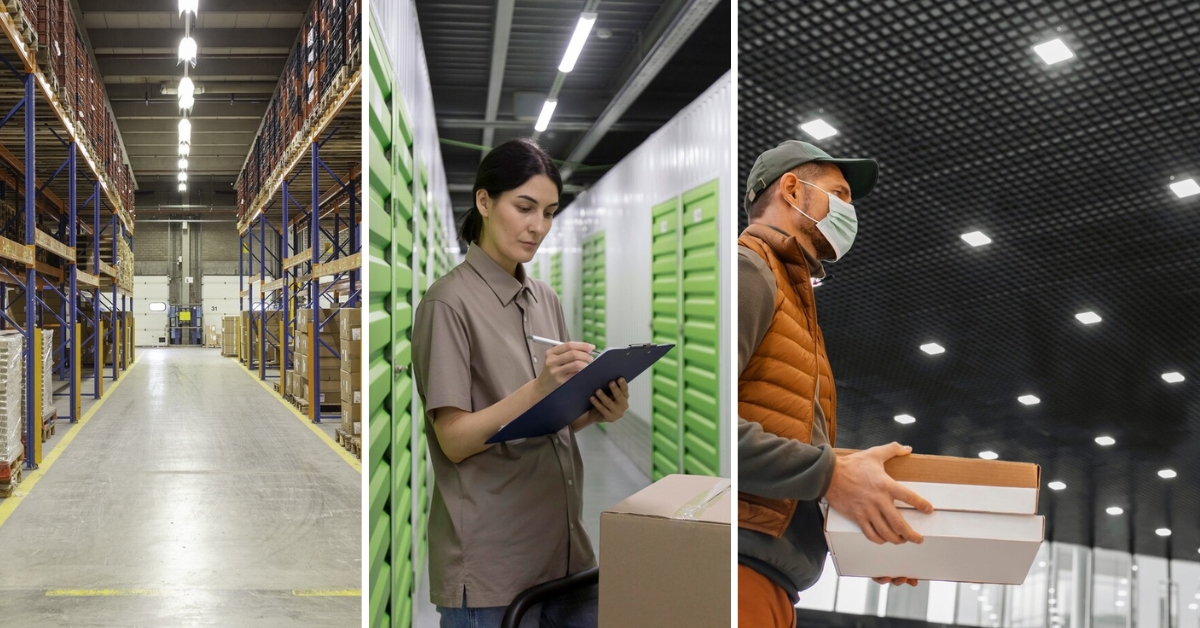
Implementing the right lighting system isn’t just about picking the best fixtures; it’s about designing a layout that maximizes efficiency and safety. Here are some tips for optimising warehouse lighting:
1. Conduct a Lighting Audit
Before upgrading your lighting, assess your current setup. Identify dark spots, over-lit areas, and energy wastage. This will help you determine where improvements can be made.
2. Layer Your Lighting
Use a combination of general, task, and accent lighting to effectively cover all areas. General lighting should provide broad coverage, while task lighting should focus on workstations and specific tasks.
3. Opt for Motion Sensors and Timers
In areas with infrequent activity, installing motion sensors or timers can reduce energy consumption by ensuring lights are only on when needed.
4. Maintain Regular Cleaning and Maintenance
Dust and dirt accumulation can reduce the efficiency of your lighting. Regular cleaning of fixtures and timely maintenance ensures that your lighting continues to perform optimally.
5. Consider Automation and Smart Controls
Smart lighting systems allow you to automate and control your warehouse lighting remotely. This can lead to significant energy savings and more customised lighting solutions based on specific times of day or activities.
Why Is LED Warehouse Lighting Energy Efficient?
LED lamps are among the most efficient options for warehouse lighting, but you might wonder just how efficient they are. The key lies in comparing their lumen output to other lighting sources.
Unlike traditional lighting, LED luminaires don’t rely heavily on wattage to deliver performance. Instead, their quality is best measured by their lumen output. LEDs are so efficient that they can avoid energy waste—a common problem with other light sources.
On average, LED lights use up to 90% less energy than incandescent or halogen bulbs with similar brightness levels. This remarkable efficiency is due to how LED bulbs convert electricity into light energy. Unlike older technologies, which waste most of their energy as heat, LED lights produce minimal heat, ensuring almost all the energy goes directly into illumination.
This structural advantage makes LEDs more energy-efficient and extends their lifespan. With no significant heat emission, these lamps experience less wear and tear over time, making them a solid long-term investment for any warehouse.
How Do LEDs Compare To Other Types Of Warehouse Lighting?
Still debating whether to switch to LED warehouse lighting? Let’s compare them to both metal halide and linear fluorescent lights.
| Warehouse Lighting Type | Energy Efficiency | Lifespan | Warm-Up Time | Maintenance Requirements | Cost Efficiency |
|---|---|---|---|---|---|
| LED Lighting | Very High (up to 90% energy savings) | 50,000 - 100,000 hours | Instant | Low (rarely needs replacement) | High initial cost, but long-term savings |
| Metal Halide Lighting | Low (high energy consumption) | 6,000 - 15,000 hours | 5-15 minutes | High (frequent replacements needed) | Lower upfront cost, but expensive in the long run |
| Fluorescent Lighting | Moderate (more efficient than metal halides) | 10,000 - 30,000 hours | 1-3 minutes | Moderate (depends on usage) | Economical upfront, but less cost-effective long-term |
| Natural Lighting (Skylights) | Extremely High (no energy costs) | N/A | N/A | Very Low | Installation costs only, great energy savings |
Metal Halide vs LED Warehouse Lighting
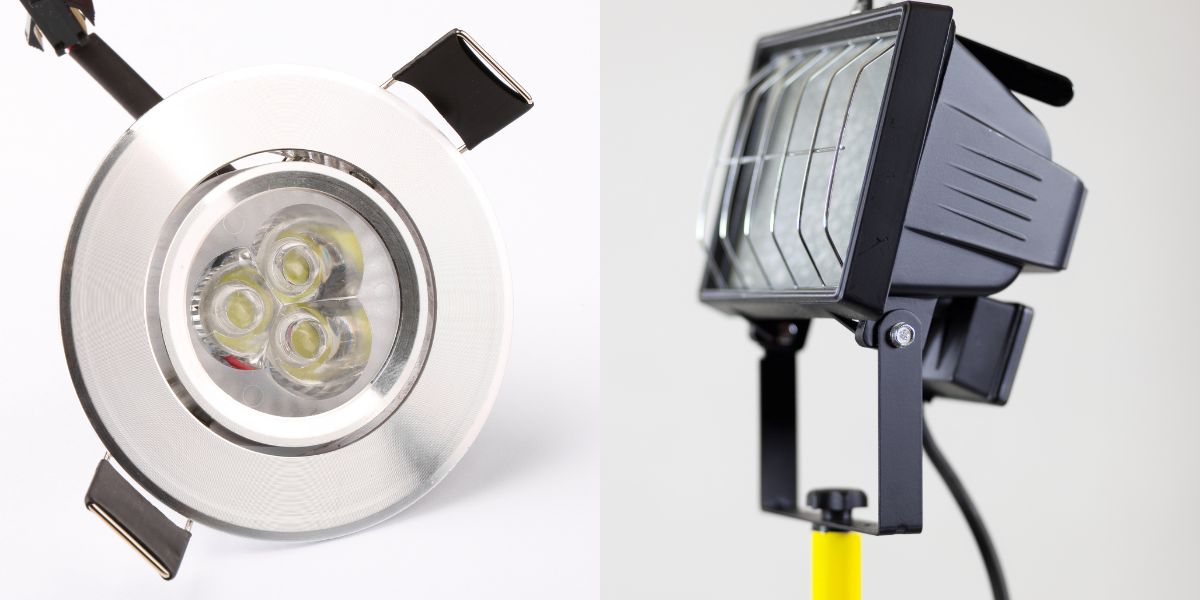
When choosing warehouse lighting, many people gravitate towards larger lamps like metal halides, assuming bigger means brighter. But despite their size, metal halide lamps are highly inefficient compared to LED warehouse lighting. While metal halides can provide reliable light output, they lag behind in staying power.
For instance, LED lamps require fewer watts to produce the same or better lumen output. Technologically, metal halide and LED lamps operate in completely different ways. Metal halides rely on a mixture of metals, including mercury, evaporating into an inert gas to produce light. In contrast, LEDs use solid-state semiconductor components that are far more efficient and longer-lasting.
Additionally, LEDs have a much shorter warm-up time than metal halides, which can take up to 15 minutes to reach full brightness. Metal halides also require a cool-down period before being switched back on, leading to unnecessary downtime.
Another key consideration is safety. Although rare, metal halide lamps can sometimes explode, posing a potential risk to warehouse workers and property. Preventive measures like scheduled lamp replacements can mitigate this risk, but they add extra costs and reduce the lifespan of these lamps.
While the initial costs of metal halide and LED lamps might be similar, metal halides are much more expensive in the long run due to their energy inefficiency. Here are some other areas where metal halides fall short compared to LEDs:
- Dimmer Functionality: LED lamps can be easily dimmed without affecting their efficiency. On the other hand, metal halides become less efficient when dimmed, which can shorten their lifespan.
- Directionality: Metal halides emit light in all directions (360 degrees), but much of this light has to be redirected, resulting in losses. In contrast, LEDs focus their light 180 degrees, which is more targeted and efficient.
- Failure Components: LED lamps gradually lose brightness over time, but the entire luminaire doesn't go out even if a few light emissions fail. Metal halides experience "cycling," where they turn on and off uncontrollably before failing, which can be highly inconvenient.
Fluorescent vs LED Warehouse Lighting
After metal halides, many warehouses transitioned to fluorescent lighting, which was seen as a more efficient alternative. However, fluorescent lights still fall short when compared to LED lights. High bay fluorescent lights, commonly used in warehouses, have benefits but also several drawbacks.
Fluorescent High Bay Lighting
High bay fluorescent lights are designed for large indoor spaces with high ceilings, like warehouses, factories, and gymnasiums. These spaces require high lumen output and concentrated downward lighting. Fluorescent lights can be mounted on ceilings or hung with cables, and they typically use a linear bulb configuration that’s easy to replace.
While fluorescent lights are cheaper upfront and more efficient than metal halides, they have significant downsides. For example, frequently switching them on and off drastically reduces their lifespan. Moreover, they contain hazardous materials like mercury, making disposal dangerous and environmentally unfriendly.
LEDs Compared To High Fluorescents
LED lights outperform high fluorescents in several ways:
- Better Colour Rendering: LEDs maintain superior colour accuracy and a broader range of colour temperatures.
- Longer Lifespan: Even the most extended lifespan of a fluorescent bulb doesn’t compare to that of an LED lamp, which is crucial for high bay lighting due to the difficulty of maintenance.
- Lower Energy Costs: While LEDs may have a higher initial cost, they quickly pay for themselves using much less energy. Additionally, unlike fluorescents, they don’t waste energy, making them the better choice for large-scale warehouse lighting.
Credit: Lightium
How To Design The Best Warehouse Lighting System?
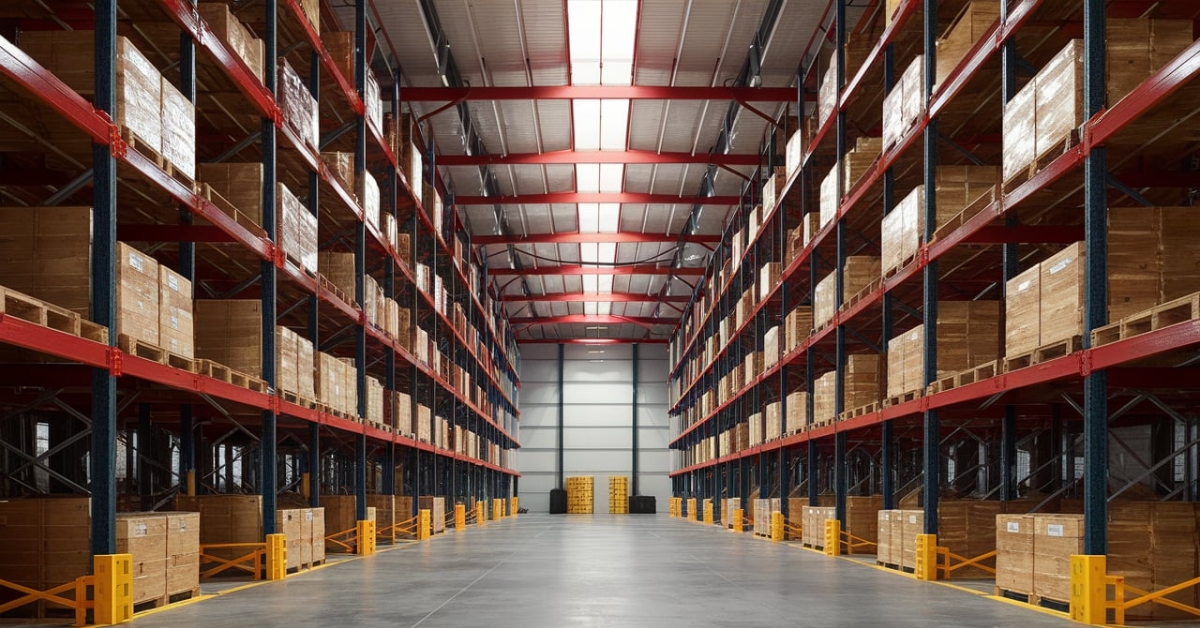
Now that you’re familiar with the different types of warehouse lighting, it’s time to plan your lighting system. A well-thought-out warehouse lighting plan ensures that all critical areas remain properly illuminated, supporting productivity and safety.
Many warehouse owners seek expert advice to aid in their lighting design. If you’re ready to start, here are some basic steps to help you create an effective warehouse lighting system. We’ve also compiled a guide on choosing the correct industrial lighting for your project—be sure to check it out!
1. Identify How Much Brightness You Need
The first step in designing an efficient lighting plan is determining the right brightness level. This needs to be done before you dive into selecting specific light fixtures. Every warehouse is unique in terms of structure, architecture, and operations. The required brightness should be tailored to your specific layout and interior design.
Factors like the colour of the ceiling and walls can significantly impact illumination. Lighter coloured walls and ceilings offer higher reflectance, meaning you can achieve sufficient lighting with fixtures with lower lumen output. In such cases, switching to lower lumen warehouse lighting can also enhance energy savings.
If you’re opting for brighter lights, be mindful of glare. Excessive glare can hinder productivity and even lead to workplace accidents. If glare becomes an issue, consider adding a diffuser lens cover to your lamps.
2. Consider The Colour Temperature
While it might seem minor, colour temperature plays a key role in visibility and productivity. Experts recommend a colour temperature between 4000K and 5000K for warehouse lighting. This range emits a cool white light with a subtle blue tint, fostering a more productive work environment and reducing eye strain for workers.
3. Use Natural Light If Possible
Wherever possible, incorporate natural light into your warehouse. Skylights or strategically placed windows can significantly reduce energy costs by minimising reliance on artificial lighting. Additionally, natural light promotes a more energising atmosphere, helping maintain daily productivity.
4. Plan Your Light System Based On The Layout
Each warehouse has a unique structure, so it’s essential to tailor your lighting system to match your layout. For instance, areas with dense shelving might require more focused lighting, while large open spaces might benefit from panel lighting.
Walkways and corridors may need dimmer lights or targeted task lighting. When purchasing lights, consider the needs of different warehouse sections to ensure uniform illumination.
5. Consider The Positioning Of Lights
Correct positioning is critical to avoid hot spots, glare zones, or dark areas. If lights are placed too close together, you might create overlapping light beams that lead to excessive glare. On the other hand, if lights are spaced too far apart, you risk leaving dark spots that could contribute to accidents. Properly map out your lighting design to strike the right balance.
Conclusion
A well-planned warehouse lighting system isn’t just a necessity—it’s a competitive advantage. The right lighting setup can make all the difference, from improving safety and reducing operational costs to boosting productivity. Regarding efficiency and performance, LED warehouse lighting remains the top choice, offering unparallelled energy savings, longevity, and flexibility.
Meteor Electrical understands that every warehouse has unique needs, so we offer a comprehensive range of high-quality lighting solutions tailored to your specific requirements. Whether upgrading your current system or designing a new lighting plan from scratch, our expert team guides you every step of the way. Discover how Meteor Electrical can help you create a brighter, safer, and more efficient warehouse—visit our website today to explore our products and solutions.
FAQs
1. What is the most energy-efficient warehouse lighting option?
LED warehouse lighting is the most energy-efficient option, using up to 90% less energy than traditional incandescent or halogen bulbs while offering superior brightness and longevity.
2. How much brightness is ideal for a warehouse?
The ideal brightness depends on your warehouse layout and tasks. Typically, a 300-500 lumens output per square meter is recommended for general areas, while more focused tasks may require higher brightness.
3. Why is colour temperature important in warehouse lighting?
The colour temperature affects visibility and productivity. A range of 4000K to 5000K is ideal for warehouses, as it provides a cool white light that reduces eye strain and enhances focus.
4. How does natural light impact warehouse lighting efficiency?
Natural light helps reduce energy costs by minimising the need for artificial lighting. Skylights or large windows can enhance productivity and create a more pleasant work environment.
5. Why should I choose Meteor Electrical for warehouse lighting solutions?
Meteor Electrical offers a wide range of high-quality, energy-efficient lighting products tailored to your warehouse needs. Our expert team provides guidance and support to ensure your warehouse is optimally lit and cost-effective.

